Van Gogh Museum Journal 1995
(1995)– [tijdschrift] Van Gogh Museum Journal–
[pagina 24]
| |
 fig. 1 Vincent Willem van Gogh in the garden of his house in Laren, 1950
| |
[pagina 25]
| |
Vincent Willem van Gogh and the Van Gogh Museum's pre-history Gerald van BronkhorstGa naar voetnoot+Articles dealing with Vincent van Gogh's reputation and the history of Theo's collection generally give the impression that the attitude of Theo's son, V.W. van Gogh, towards his uncle's artistic legacy was entirely in tune with that of his mother, Johanna van Gogh-Bonger. Following her example, he is portrayed as developing almost automatically into an equally unquestioning guardian of his uncle's reputation. This version completely overlooks the fact that Vincent Willem's position was totally different from his mother's. When Johanna inherited her husband's collection in 1891, her brother-in-law was virtually unknown, but he was a very famous artist indeed by her death in 1925, when the works passed to her son. As a result, Vincent Willem's attitude to his uncle was governed by the problems associated with the sons of famous fathers, as was suggested by A.M. Hammacher, former director of the Kröller-Müller Museum in Otterlo, who wrote after Vincent Willem's death in 1978: ‘His unconventional, slightly awkward, stiff and obstinate behaviour must certainly be due in part to the fact that he was fatally bound up with that [Vincent's] fame and, being the nephew, had to show respect while at the same time wanting to prove to himself and the world that he was someone in his own right, irrespective of artistic values.’Ga naar voetnoot1 How the ‘Engineer,’ as he was later known, dealt with this problem is the subject of this essay. | |
BiographyVincent Willem van Gogh was born in Paris on 31 January 1890. Both the uncle after whom he was named and his father died before he was one year old. His mother, Johanna (Jo) van Gogh-Bonger, moved back to the Netherlands in January 1891, where she opened a boarding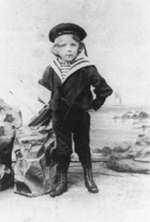 fig. 2 V.W. van Gogh at the age of four or five, 1894-95
house in Bussum called Villa Helma. It was here, surrounded by his uncle's paintings, that Vincent Willem spent his childhood. Hanging above the mantelpiece in the living room was The potato eaters, ‘facing it, above the large cupboard, was The harvest, over the door was the Boulevard de Clichy [...]. On the edge of the white porcelain shade of the paraffin lamp hung a couple of Japanese prints [...]; in the bedroom the Branches of an almond tree in blossom, the Pietà, La Veillée.’Ga naar voetnoot2 The young Van Gogh's world was tinged by his uncle's artistic legacy, not just in the shape of the paintings he saw all around him but above all because his mother had | |
[pagina 26]
| |
given herself the task of making Vincent's reputation. In November 1891 she wrote: ‘Theo taught me a lot about art, no, I should say that he taught me a lot about life. Apart from the care of a child, he left me with another task, Vincent's work, to have it seen and appreciated as widely as possible.’Ga naar voetnoot3 The cultural and political values that Jo instilled in her son were bound up with the socialist movement in the Netherlands around the turn of the century, of which she was part. Above all, the idea that the cultural education of the masses was of prime importance left a permanent mark on him. Soon after settling in Bussum, Jo became a member of the newly founded Social-Democratic Labour Party (SDAP). It was through the party that she became friendly with the politician F.M. Wibaut, whom she probably got to know when he was the editor for social and economic affairs for De Kroniek, a progressive weekly for which Jo made translations from English and French. Unlike Theo, Johanna's views on art seem to have been influenced mainly by the members of the Eighties Movement (De Tachtigers). She was certainly attracted to their love of pathos, and in the years following Theo's death it seems that this led her to take her veneration of Vincent somewhat to extremes. Roland Holst criticised her sharply in a letter to Jan Toorop of 1892: ‘Mrs Van Gogh is a charming little woman, but it irritates me when someone gushes fanatically on a subject she knows nothing about, and although blinded by sentimentality still thinks she is adopting a strictly critical attitude. It is schoolgirlish twaddle, nothing more. [...] The work that Mrs Van Gogh would like best is the one that was the most bombastic and sentimental, the one that made her shed the most tears; she forgets that her sorrow is turning Vincent into a god.’Ga naar voetnoot4 The young Vincent Willem was to rebel against his mother's lofty aesthetic sentiments and those of her friends. He wanted to strike out on his own, free of the reputation of his uncle, who had been becoming increasingly famous since the beginning of the century. After attending secondary school in Amersfoort and Amsterdam for five years, Vincent Willem entered the College of Technology at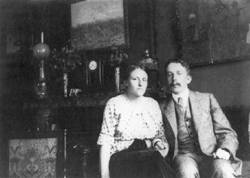 fig. 3 V.W. van Gogh and his first wife, Josina Wibaut, in his mother's house, c. 1915
Delft in 1907, from which he graduated as a mechanical engineer in 1914. This was a deliberate choice: ‘My friends and I realised that our future did not lie in the area in which our fathers (to put it that way) worked. We didn't want to think about aesthetics all the time. We preferred to occupy ourselves with more concrete matters and work in society.’Ga naar voetnoot5 He was even more outspoken in his diary for 1972, in which he wrote about his reaction to the subjective ideal of beauty that had dominated his youth: ‘At home it was rapture, rapture all the time, with no attempt to justify oneself. I was never taught how to understand art (paintings, music). I cared nothing about it. I respected it, but regarded it as a sort of sorcery that was not for me.’Ga naar voetnoot6 Soon after finishing his studies at Delft he put his desire to free himself of his parental surroundings into effect. In 1915 he married Josina Wibaut, daughter of his mother's friend, and the couple left for the United States that same year. On his return to the Netherlands in 1920 he set up as a consulting engineer for industrial organisations - an area in which he carried out pioneering work.Ga naar voetnoot7 | |
[pagina 27]
| |
The heirJohanna van Gogh died in 1925, and as her sole heir Vincent Willem inherited her collection.Ga naar voetnoot8 At first this had no effect on his attitude to art: detachment was still his watchword. Unlike his mother, he preferred not to talk about his uncle's work. This emerges clearly in an address he gave in 1931: ‘From his very earliest youth, the speaker [...] quite literally got up and went to bed surrounded by them [Vincent's paintings], so that his opinion about them is based too much on sentimental considerations for it to be sufficiently important to be expressed here.’Ga naar voetnoot9 Although he clearly differed from his mother in this respect, he did uphold her policy on another front, albeit without taking much of the initiative himself. In 1909 and 1917-1919 Johanna had loaned parts of the collection to the Rijksmuseum in Amsterdam, and her son evidently intended to continue this practice.Ga naar voetnoot10 In 1926, he and W.J. Steenhoff, Director of the Mesdag Museum but previously the curator in the Rijksmuseum who had persuaded Johanna to allow paintings out on loan, came up with a plan to exhibit a selection of Vincent's works in his museum in The Hague. Van Gogh was even prepared to give the museum several on long-term loan. Mesdag's descendants, however, did not take kindly to the idea of changing the nature of the museum, and refused permission for the exhibition to take place.Ga naar voetnoot11 A loan to another museum would have solved a practical problem, for after the rejection by the Mesdag Museum Van Gogh had no clear idea how the collection should be administered. It had always been kept in the family home in Laren, where about 20 works hung on the walls. Due to lack of space the rest were stored in an un-heated room that was rarely visited. A solution was found after the highly successful Van Gogh retrospective of 1930 in Amsterdam. Partly due to Josina van Gogh-Wibaut, who strongly felt that the collection should be accessible to the public, Vincent Willem transferred the bulk of his collection on loan to the Stedelijk Museum. A board of trustees was appointed to administer the collection while it was in fig. 4 V.W. van Gogh and his second wife, Nelly van der Goot, 1961
the museum. The board consisted of Van Gogh, three members appointed by the City of Amsterdam, Josina van Gogh-Wibaut and Steenhoff. This situation lasted only a very short time, however, for Steenhoff died in 1932 and Josina van Gogh a year later. From then on Van Gogh conducted the discussions with the museum alone.Ga naar voetnoot12 His involvement with the collection certainly increased, as became evident in 1937, when he published an article in De Socialistische Gids (an organ of the SDAP) in which he set out a view of the function of museums that was quite advanced for its day. In the article, which was written from the idealistic viewpoint of ‘educating the working classes,’ he argued forcefully for staging exhibitions and for rotating displays from a museum's permanent collection. Only then would the layman be able to appreciate the differences between the works, resulting in a lively museum. ‘A good way of combining a small exhibition gallery and large collections,’ he wrote, ‘is to rotate the displays systematically, each quarter, for instance. However, not all the space available need be used for the temporary exhibition. A good unity will be achieved by having a permanent | |
[pagina 28]
| |
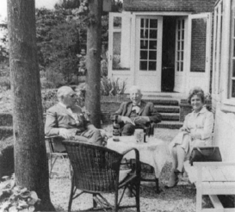 fig. 5 A.H. Hammacher and V.W. van Gogh in the garden of the latter's house in Laren, 1965
nucleus of the most important works, so that they are accessible at all times.’Ga naar voetnoot13 | |
ChangesAlthough he was displaying an interest in museum policy, Van Gogh continued to maintain his detached stance towards his own collection. When asked, he was generous in loaning out works from the Stedelijk Museum to major exhibitions, but he took no steps to organise exhibitions of his own collection elsewhere. Nor did he write about his uncle's artistic achievements. Or as his son, Johan van Gogh, later said: ‘In the period 1920-40 my father was absolutely convinced that he should not live off his famous uncle's name. Keeping the collection together, fine. [...] But nothing more than that.’Ga naar voetnoot14 This attitude, however, changed dramatically after the Second World War. Van Gogh's reservations made way for a very active involvement with his uncle's works. Using his loans to the Stedelijk Museum, he organized numerous exhibitions at home and abroad - in Sweden, France, Belgium, and later in America. These were generally held in the winter months so that the collection could be seen during the summer at its home base in the Stedelijk Museum. Some of these exhibitions, such as those in New York and Chicago in 1949-50, were undertaken jointly by Van Gogh and the Kröller-Müller Museum in Otterlo. These efforts are all indications that Van Gogh was increasingly coming to regard himself as the guardian of Vincent's art and the upholder of his mother's tradition. The family pride, the realisation that he was representing Theo and Vincent and was thus following in his mother's footsteps by fighting for their ‘cause’ was certainly a determining factor in Van Gogh's life from now on. This new stance undoubtedly had something to do with the fact that it would now have been difficult to accuse him of ‘living off his uncle's name,’ for he had proved himself as a person by making a career in his own chosen profession. His firmer sense of identity must also have been due to the analysis he underwent in 1941 with the Freudian psychiatrist H.G. van de Waals. He took this step at the prompting of his second wife, Nelly van der Goot (1899-1967), who took a keen interest in psycho-analysis.Ga naar voetnoot15 It is not known precisely what this analysis meant for the Engineer personally, but it definitely left its traces on his approach to art. Where previously he had considered it ‘sorcery,’ he now began to explain art from a psychoanalytical point of view. ‘A museum,’ he said in an address in 1955, ‘can be likened to a psychological laboratory (as can an exhibition). After hundreds of years one still finds material for the study of an artist's personality. We can see which fundamental emotions stirred him; we can observe his feelings of fear and guilt, as well as his defence against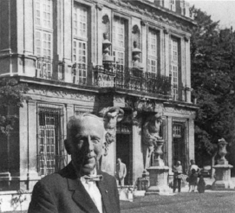 fig. 6 V.W. van Gogh in front of the Pavillon de Vendôme in Aix-en-Provence, 1959
| |
[pagina 29]
| |
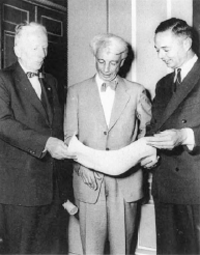 fig. 7 V.W. van Gogh, W. Sandberg and H.W.A. Heldring at Van Gogh's nomination to Honorary Skipper of the Flying Dutchman and member of the World Society of Skippers of the Flying Dutchman in 1959
them, and also the causes of the impediments to his development.’Ga naar voetnoot16 It was thus that he found a way of assimilating his uncle's art, and this is most clearly expressed in an article that appeared in the Scottish Art Review in 1955. Using the example of The potato eaters, Van Gogh tried to explain in a methodical way why a significance could be attributed to a work of art that the artist had not himself put into it. The potato eaters, he wrote, could be seen either as a painting that expressed happiness at the security of family life or its very opposite: the depressing social circumstances of a peasant family.Ga naar voetnoot17 He remained a true advocate of the psychoanalytical approach to art for the rest of his life, and was on friendly terms with a number of the ‘analysts’ who later placed Vincent van Gogh on the psychiatrist's couch, such as H.R. Graetz, Albert J. Lubin and Charles Mauron.Ga naar voetnoot18 | |
The dream of a museumIn the mid-1950s, with old age approaching, he began thinking about the future of his collection. Although the prices for Vincent's works were rocketing, he was determined to keep the collection together. He evidently cherished a dream of founding a separate museum, although he had not got to the stage of making hard-and-fast plans. He originally thought of transferring the collection to the Kröller-Müller Museum in Otterlo, but Hammacher, the director at the time, was not interested in a collaboration.Ga naar voetnoot19 Another location Van Gogh considered, at least according to Hammacher, was Zundert, the village near the Belgian border in the province of Brabant where Vincent van Gogh was born in 1853.Ga naar voetnoot20 No firm plans are known for the construction of a museum in that remote spot, but perhaps he gave more serious consideration to Laren, where he had been living since the 1920s, as the new home for his collection.Ga naar voetnoot21 It is difficult to say how serious all these plans were. It looks as if Van Gogh was putting out feelers without having a real alternative himself. However, in his attempts to create a museum he was becoming increasingly disappointed by the | |
[pagina 30]
| |
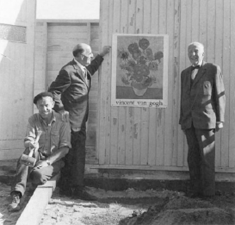 fig. 8 V.W. van Gogh during the Museum's construction, 1970.
lack of initiative on the part of the Dutch state. In 1959, after the funeral of Baart de la Faille, the author of the catalogue raisonné of Vincent's works, he vented his frustrations to Hammacher: ‘In the car he said: “What happened to De la Faille could happen to me tomorrow.” He was very serious, and said: “Nothing has been arranged, and I am beginning to think that I will take them [the paintings] somewhere else [...]. I can have an immediate success on the art market, of course [...]. There has still been no approach from either the burgomaster [Van Hall] or Reinink [Director-General for the Arts at the ministry]. They all behave as if everything will turn out all right in the end, but it's not turning out all right at all [...].”’Ga naar voetnoot22 Following this outburst, Hammacher vowed to take action himself. This sounding of the alarm quickly produced results. Only a few months after De la Faille's funeral a meeting took place during the Van Gogh exhibition that was held at Aix-en-Provence in the autumn of 1959. Mr and Mrs Van Gogh were approached by H.J. Reinink and A.M. Hammacher, who asked them how the collection could be kept together for the benefit of the nation. The outcome of the conversation was very satisfactory for Van Gogh and his children. In the first place, the Dutch state declared that it was prepared to buy the collection (for a price to be agreed upon later), and secondly, a body would be set up to ensure the family's lasting involvement with the collection. The site for the new museum would be decided upon in consultation with the family, and Van Gogh himself would take part in its construction. The fourth and final point was that the museum would contain a studio for visual self-expression.Ga naar voetnoot23 Although an agreement in principle was reached at Aix-en-Provence, the actual negotiations still had to take place. On 16 November there was a meeting between Van Gogh, Reinink and Burgomaster Van Hall. The latter, who had been told of the developments in Aix by Reinink, was asked whether he and his aldermen were prepared to keep the collection in Amsterdam. Their willingness to do so was immediately apparent; indeed the speed with which the discussion moved on to the subject of the museum's location betrayed nothing short of eagerness. After the meeting Van Gogh noted: ‘Discussion in the burgomaster's office with Henk Reinink present. Reinink had told Van Hall of our conversation in Aix about the conditional sale of the collection. Amsterdam could build a museum on the corner of Vermeerstraat. I said that it would have to contain something more in order to make it lively. Principal question: how is it to be organised and what is the sum involved? [...] They paid two million for those paintings of Regnault's. I did propose the alternative of selling some of the paintings for large sums (to America).’Ga naar voetnoot24 On 20 November 1959, shortly after the discussion with Van Hall and Reinink, he wrote: ‘Conversation with Sandberg [director of the Stedelijk Museum]. Have told him the news. Told him what we would like best: under our own control with the government paying us a lump sum, for which we undertake to exhibit the collection for many years in a state museum. [...] Discussing the sums he made the rough calculation of 100 paintings at | |
[pagina 31]
| |
 fig. 9 V.W. van Gogh and Emile Meijer, the Museum's first director
an average of 100,000 guilders apiece equals 10 million, in other words he estimated them at half the appraisal value. According to him that puts the price somewhere between 10 and 20 million guilders. I also told him: the more say we have the less the government has to pay. A very satisfactory conversation.’Ga naar voetnoot25 In 1962, as a result of these informal talks, Van Gogh's collections were transferred to the Vincent van Gogh Foundation for 18,470,000 guilders.Ga naar voetnoot26 Now it was the turn of the Amsterdam City Council to decide on the construction of a national museum on its land. Since everyone realised the quite obvious importance of keeping the Van Gogh collection in the city, it was really just a question of formalities. On 10 October 1962 the motion submitted by the College of Burgomaster and Aldermen to make a site for the museum available free of charge was approved without a show of hands. That afternoon, all the parties represented on the council praised the agreement reached between Van Gogh and the government. Only a few members had comments to make on the aim of the museum, which also involved the function of the Stedelijk Museum. The question was: should the Stedelijk concentrate on contemporary art and as a result neglect the historic collection, or could it also display the classics of modern art?Ga naar voetnoot27 Councillor Fisher of the Pacifist-Socialist Party, for example, began his speech with a remark on the effect of removing the Van Gogh collection from the Stedelijk Museum. Because the Van Gogh collection mainly attracted foreign visitors, he was afraid that they would no longer come to see the Stedelijk's own collection, much of which was not on view anyway because of a shortage of space. His suggestion was to supplement the Van Gogh collection with around 50 works of the same period from the city's collection. He specifically mentioned the French Impressionists, the School of Barbizon, Corot, Courbet, Millet, Gauguin and Redon. This would mean that the Rijksmuseum Vincent van Gogh would be somewhat broader in scope than planned, but it would give the Stedelijk the opportunity to show more of its collection of modern art.Ga naar voetnoot28 | |
[pagina 32]
| |
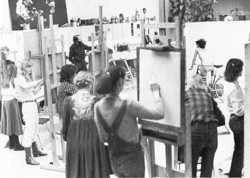 fig. 10 Drawing exercises in the Museum's creative workshop
Le Cavalier, councillor for the Liberal Party, believed that the one-sided concept of the Van Gogh Museum was, on the contrary, an advantage. ‘This Van Gogh gallery will become a temple to a turbulent life, as it were, unlike other museums, which have been put together by individuals from the works of several people and as a result always express the personal taste of a collector.’Ga naar voetnoot29 Verhey, of the Communist Party, was the only member critical of the plan as a whole. He said that Amsterdam had been forced to make a decision by the agreement between Van Gogh and the state. The city itself had no reason at all to change the present situation. On the contrary, he said, there was even a proposal for improving the display of the Van Gogh collection in the Stedelijk Museum.Ga naar voetnoot30 | |
The Van Gogh MuseumAs part of the agreement between the state and the Vincent van Gogh Foundation, Van Gogh was appointed advisor for the construction of the museum. Although he was now over 70, he plunged with great vigour into the task of carrying out research on specific points of the construction programme. He supplied examples, and many of their features were included in the building plan.Ga naar voetnoot31 In mid-1963 Gerrit Rietveld, the éminence grise of Dutch architecture, produced a design for the Van Gogh Museum. It was to be a daylight museum with a central hall open to the roof, which would serve as a light shaft. The design, produced in consultation with Van Gogh, was based on that of the Guggenheim Museum in New York. Although both Rietveld and Van Gogh were impressed by Frank Lloyd Wright's creation, it was not exactly a miracle of functionalism, which was what Van Gogh was after. In that respect he was more taken by the Musée-Maison de Culture in Le Havre and the Stedelijk Museum's daylight wing, which had been built under Sandberg.Ga naar voetnoot32 The ensuing discussions of the advisory committee with the Government Buildings Department led to the framing of a list of requirements that would serve as a guide for the construction stage. It was in this programme that the museum's functions were first set out. Apart from displaying the bulk of the permanent collection, it would have the following ancillary tasks: to mount temporary exhibitions; to organise lectures, film shows, guided tours and other forms of information; to provide facilities for leisure activities (self-expression); and to provide space for study and research in the library and archives. ‘The state,’ it was noted in the programme, ‘has declared that it will assist in enabling the museum to take a place in the social life of Amsterdam. Specific mention is made of the opportunity for self-activation, partly as a way of appreciating the artistic expressions of others.’Ga naar voetnoot33 The stress placed on the ‘liveliness’ of the museum clearly came from Van Gogh himself. He had not disavowed his earlier ideas on the subject; they had become even stronger, largely due to the activities of American museums. In a letter of 1962 to Anne Vondeling, a member of the parliamentary Labour Party, he went to some lengths to explain his ideas on the subject, which were based on socialist principles. ‘A museum ought to have a place in the city's social fabric in its endeavour to educate the working | |
[pagina 33]
| |
classes. Visits by schools and temporary exhibitions, however important they may be in themselves, are not enough in this respect [...] Museums in the United States do things that we haven't even thought of over here. There visitors are given the opportunity to participate themselves, and on a large scale. Everywhere there are classes in “self-expression” or “perception.” [...] It is [...] a powerful way of stimulating interest in the museum's collection. In addition, everything must be done to make a museum lively and alive. [...] This has always been a hobbyhorse of mine, and I hope that the Van Gogh collection will become a centrepiece in this development, which I consider extremely important for helping people better themselves.’Ga naar voetnoot34 | |
The museum in practiceWhich of the ideals that Van Gogh had developed were actually put into effect when the museum finally opened its doors in 1973? The first director, Emile Meijer, certainly presided over a great deal of activity, with lots of exhibitions and events following one another in rapid succession, but most of them lacked the relation to the core collection envisaged by Van Gogh. The programming was considerably reduced under Meijer's successors, and there was little ‘liveliness’ to be seen. The Engineer's wish that the museum should contain a workshop for self-expression was respected even after his death in 1978, but here too the relation to the permanent collection was very tenuous. The average museum visitor certainly made no use of its facilities, and it was closed in 1991. It is only in the past decade, thanks to a more varied exhibition programme covering the second half of the 19th century and the beginning of the 20th, that one can speak of ‘a museum brought alive by temporary exhibitions,’ which may or may not be based on the museum's own holdings. And partly as a result of an active acquisitions policy the permanent Van Gogh collection has been given an increasingly rich frame of reference. The museum today appears to live up to the Engineer's ideals in many respects. It has proved extremely accessible to the general public, and each year it attracts visitors in numbers that would have exceeded his highest expectations. |
|

